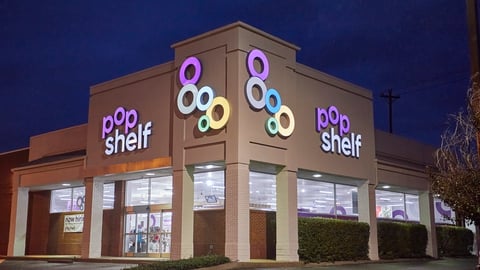Insight: How top retailers evaluate in-store technology
A growing number of retail executives are reacting to the fact that today’s most impactful decisions are made inside retail locations.
Already, roughly half of all retailers have invested in in-store technology, and over 80% of the remainder plan to do so in the next year, according to recent Coresight Research. Top investments focus on four areas: addressable out-of-stocks (OOS), properly executed pricing and promotions, planogram compliance, and allocation and assortment planning. The goal is to stop the bleeding from in-store efficiencies, which cost retailers an average of 6% gross sales and 5% operating margin.
Following are four criteria used by the industry’s most sophisticated technology buyers to hone their business model and create competitive advantage. As Simbe’s CEO, I have the privilege of working closely with many such teams at BJ’s Wholesale, Carrefour, SpartanNash and dozens more.
What real-world business challenge can the solution solve?
As store operations and IT executives lead successful evaluations and chain-wide deployments of retail technology, support from finance and innovation is critical. CEO and board sponsorship of automation and AI initiatives are similarly central to success.
Top performing teams:
•Pinpoint specific, real-world problems For example, Coresight found that retailers’ most challenging operational inefficiencies include pricing & promotion execution and managing out-of-stocks (OOS). The majority indicated a strong interest in solutions that automate inventory tracking and optimize pricing & promotions.
•Multi-thread value streams across the business Retail technology delivers returns across the enterprise if chosen and implemented well. Many Simbe customers enjoy a 4x return on their initial investment within a few months, in part because use cases span store operations, supply chain, e-commerce, merchandising, vendor relationships and more.
•Flag areas requiring more visibility Top retailers recognize that some challenges may be more substantial than they know. Fewer than 30% of retailers report having true visibility across four core areas – managing OOS, pricing & promotion execution, planogram compliance, and allocation & assortment planning.
How does the tech support the people at retail’s core: store teams and shoppers?
Evolving customer expectations and retail’s labor challenges are no secret. The right solutions have human-centered design that equips store teams with tools that improve both the associate and shopper experience.
Top-performing teams prioritize technology that will:
•Automate repetitive tasks Tedious, monotonous tasks drain any human, including store associates. Such tasks are ripe for automation: manual audits of stock levels, confirming pricing & promotions, and auto-reordering items for replenishment. Our North American customers find that 60% of items believed to be OOS are addressable and inside their stores. It’s hard to do boring work well.
•Improve online inventory accuracy Another priority application for automation is speeding online order fulfillment with digital pick paths for unique orders. With inventory management technology, store teams gain a real-time, ultra-precise understanding of item availability, price accuracy, and exact location. That brick & mortar intelligence also improves online inventory, which accelerates shopping online.
•Elevate the in-store experience For shoppers, the above translates to better-quality customer service throughout the store, including better delivery experiences, accurate pricing information, more accessible associates, and fuller shelves stocked with products that are in the right place. With more accurate information in-hand, associates make smarter inventory decisions and refocus time on higher-value tasks – including the important, uniquely human ones they enjoy, like helping customers on the retail floor. Simbe data supported by Coresight research shows AI can save up to 30 weekly labor hours per store, improving associate satisfaction and retention while reducing shrink.
What actionable insights does it provide?
As the COO of a publicly-traded retailer recently shared, intelligence is worthless without actionable insights. For that reason, the accuracy of computer vision is paramount. Its precision undergirds all analytics.
Top-performing teams use in-store analytics to:
•Alert staff of issues Progressive retailers use technology to empower store associates to respond to everyday issues rather than look or them – and help managers verify if corrective action is taken. Such fixes include low and OOS items, price & promotion errors, and items in the wrong location in-store.
•Establish best practice standards Industry leaders monitor location conditions and performance remotely, both at unique locations and across their entire chains. Dashboards are increasingly central to establishing company-wide standards for performance, as well as institutionalizing best practices for attainment.
•Create new revenue streams Eventually, data insights become monetizable. With the accuracy that computer vision brings to inventory management, retailers are reselling collected insights across their ecosystem – to DSD partners, CPG brands, and more – ultimately driving even more return on investments.
Are customers happy about scaled deployments?
Retail decision makers who dig into vendor references are often unpleasantly surprised. They discover that products haven’t actually been tested in real stores and clubs. They learn “chain wide deployments” only involve a few locations, and that unhappy customers aren’t planning to renew contracts.
During reference checks, high-performing teams:
•Confirm full-scale deployments and measurable ROI The most reliable metric is a vendors’ number of scaled deployments across numerous locations, if not chain-wide. Lack of adequate evaluations is why some notable chain-wide deployments are starting to be deactivated. They overpromised and under-delivered.
•Do a lot of back channeling Retail’s leaders prioritize customer references that vendors haven’t provided. Speaking directly with analysts, partners and customers often surfaces the truth.
•Seek customers who have been satisfied for years Customers should be able to cite concrete examples about the quality of technology, service and business outcomes they’ve achieved.
Retail has only scratched the surface when it comes to unlocking the value of AI and automation in-store — and discerning proven solutions from those that underdeliver is becoming an increasingly crucial skill.
By leveraging the above criteria, leading retailers have outlined a blueprint for deploying best-in-class technology and achieving consistently remarkable results.
Brad Bogolea is CEO of store intelligence platform Simbe, a leading provider of store intelligence solutions. He can be reached at brad@simberobotics.com.











